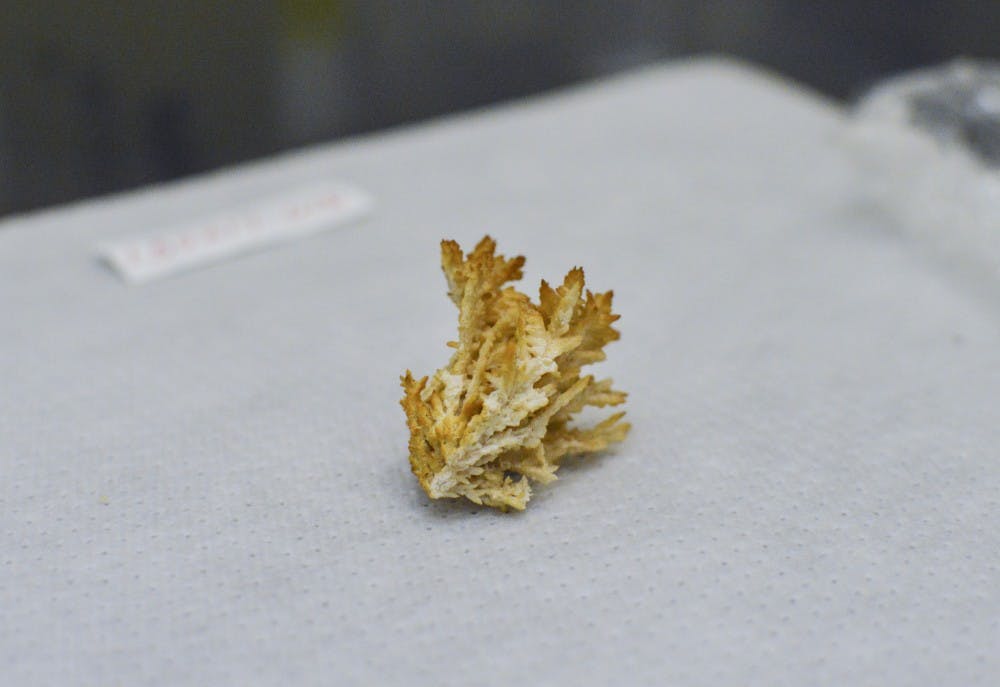Scientists at UNM’s Radiogenic Isotope Laboratory, located in Northrop Hall, said the discovery is among the most significant advances in the scientific understanding of the origin and development of the earliest Americans — especially in relation to the link to modern Native Americans.
Earth and planetary sciences professor Yemane Asmerom, who led the research at UNM, said “Naia,” the name given to the remains, is the most intact skeleton ever recovered from the era.
Naia’s remains were discovered by a technical dive team exploring the Hoyo Negro, a submerged chamber in the Sac Actun cave system located in the Yucatan Peninsula of Mexico.
Samples of the remains were then sent to researchers at UNM because of their reputation for the accuracy and diversity of dating techniques available at the College of Earth and Planetary Sciences, he said.
Genetic evidence found in the remains may settle past arguments as to the ancient lineage of modern Native Americans, he said.
One theory is that the subtle differences in facial and dental characteristics existing between the earliest American skeletons and modern Native Americans suggest there were separate migratory events, and modern Native Americans descended from one of those lineages, or a combination, he said.
However, extensive analysis of genetic material, as well as morphological traits found on Naia’s bones, suggest that she and her people, along with modern Native Americans, all descended from common ancestors who crossed the Bering land bridge in a single migratory event. That, Asmerom said, is exactly the type of evidence they’ve been searching for.
“This skeleton dates to between 13,000 and 12,000 calendar years ago and has Paleoamerican craniofacial characteristics and a Beringian-derived mitochondrial DNA,” Asmerom said in a paper published in “Science” magazine. “Thus, the morphological differences between Paleoamericans and Native Americans probably resulted from in situ (on-site) evolution rather than separate ancestry.”
Victor Polyak, a UNM senior research scientist and clean-room lab manager, said he has been leading the campus’s research into analyzing cave deposits, including some found on Naia’s remains.
Polyak said mineral deposits known as florets — crystalline structures that form similarly to stalagmites found on Naia’s bones — helped to confirm the estimated age of the remains.
By placing samples of the florets in a mass spectrometer, Polyak was able to extract Uranium and thorium molecules. Then, through a process known as Uranium series dating, a radiometric dating technique based on the various stages of decay for uranium isotopes, they were able to estimate the approximate age of the remains, he said.
Get content from The Daily Lobo delivered to your inbox
Asmerom said that by using this technique they were able to calculate the approximate maximum age of the samples to be around 13,000 years old.
“If there is one area of dating technique we’re known for the world over, it is the ‘Uranium series’ technique based on the short-lived isotopes of Uranium,” Asmerom said. “We take advantage of the short-lived isotopes because we can measure things with them very precisely.”
As a result, UNM was the logical place to send Naia’s remains for analysis. Through it, they have been able to further scientific understanding of the cultural development of Native Americans, he said.
“The reason why this is truly important is that here in New Mexico we fit in prominently into the history of human occupation in North America,” Asmerom said. “It has a beautiful sort of both global and local relevancy.”
Tomas Lujan is a staff reporter for the Daily Lobo. He can be contracted at news@dailylobo.com or on Twitter @TomasVLujan.






